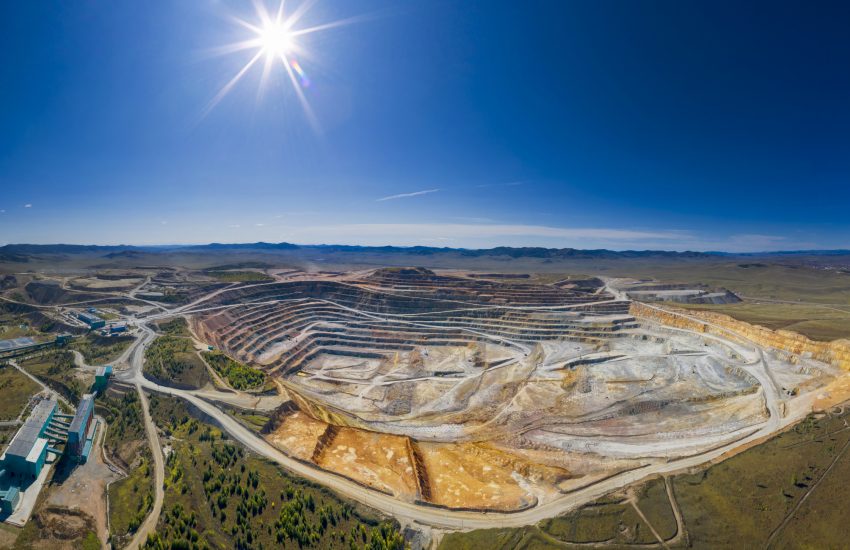In March, ELM posted on the burgeoning environmental conflict over plans to construct an open-pit lithium mine in Thacker Pass, Nevada — plans triggered by what has become a momentous shift away from an emissions-intensive, fossil-fuel based economy, to one powered by renewables. See: “Ranchers, Environmentalists, and Indigenous Communities Lock Arms Against Homegrown Lithium.”
Precipitated by the potential for domestically sourced minerals to foster homegrown energy and in turn breed income, twenty-first century prospectors have been flocking to the nation’s once abandoned mineral deposits from coast to coast. With an uptick in rare earth metal explorations, including proposed lithium mining facilities in Texas, California, and North Carolina, as well as the restoration of historic gold mines in California and uranium mines in Arizona, environmentalists, neighboring homeowners, and indigenous tribes are primed to decelerate the gold-rush revival and ultimately impede what looks to become a lithium/uranium rush.
North Carolina Lithium Mine Delayed
In an effort to find homegrown energy sources for powering and meeting the demand for electric vehicles, among other items, mining for lithium in the United States, and specifically Piedmont, North Carolina, hit a snag when facing regulatory challenges and opposition from local residents and environmentalists citing health concerns, disruption of landscape, noise pollution, and water contamination. Such opposition has now forced the mining company investors to begin looking to site selection outside the United States, and so the paradox goes.
California Environmentalists and Residents Fight a Gold Rush Revival
Dating back over a century and a half ago, California’s “gold rush” towns were notorious for a quick rise and an equally dramatic fall, leaving behind ghost towns laden with relics of boom and bust misfortune. However, dormant gold mines in the foothills of the Sierra Nevada are suddenly showing signs of life. Prospectors, who believe there remains a surfeit of gold in the Golden State, once again have their sights set on the second-highest gold producing mine in the United States: the Idaho-Maryland Mine. Despite the promise of new jobs, it may prove a herculean task for gold prospectors to overcome the formidable California environmental ethos. Nonetheless, investors have been and continue to be willing to take on the clout of community opposition and California’s environmental regulations in order to covet the skyrocketing price of gold.
Shut down in 1942 by the U.S. government following Pearl Harbor, the Idaho-Maryland Mine reopened after WW II, but ceased operation in 1956. Though the mine spans approximately 175 acres of land surrounded in part by high pine and fir trees, if the Idaho-Maryland Mine were reopened today, it could expand to 2,585 acres underground, the limit of the developer’s mining rights, with underground blasting likely felt in nearby homes and buildings. Developers seek an 80-year permit to operate the mine 24/7 and intend to extract, on average, 1,000 tons of gold-bearing rock per day.
Opponents cite traffic problems and environmental risks associated with an industry that uses arsenic, mercury and other toxic chemicals in gold processing. In fact, if the mine reopens as planned, the developer will be responsible for a $3M clean up of one highly polluted area of the mine, a legacy of a prior operator.
Given that the foothills of the Sierra Nevada are deemed fire country and are adjacent to a bone-dry South Yuba River, there are also serious concerns about water. Residents and environmentalists claim that many private home wells are destined to run dry because of the mining use, and add concerns of potential chemical spillover from the leach ponds that could make its way into the river system.
Reopening of a Uranium Mine in Arizona May Once Again Threaten Indigenous People
Under a global push to develop alternate energy and curb climate change, investment groups have begun exploring sources for uranium to fuel nuclear power plants which, in turn, has incentivized the reopening of an old uranium mine just outside of Grand Canyon National Park in Arizona. The legacy of Arizona’s uranium mining practice, dating back to the development of atomic bombs during World War II, is controversial to say the least. From 1944 to 1986, nearly 30 million tons of uranium ore were extracted pursuant to leases with the Navajo Nation. Many Navajo people worked the mines, living and raising families proximate to the mines and mills. Native Americans working in the uranium mines reported higher rates of lung cancer, and a uranium mine waste pond collapsed in 1979 releasing more radiation than the Three Mile Island nuclear power plant failure. Today, there are more than 500 abandoned uranium mines on Navajo Nation land, as well as homes and water sources with elevated levels of radiation.
In the face of opposition, investors opine that uranium-mining practices today are far safer and better regulated by environmental controls. Akin to the reserves of California gold, investors estimate that there are 2.5 million pounds of valuable uranium waiting to be unearthed.
Catch 22
The renaissance of mining represents the perfect paradox for environmentalists. On one hand, a renewed focus and return to mineral mining will likely impact sensitive communities and ecosystems. Conversely, the U.S. must provide sources—such as lithium mining—for its energy transition in order to combat climate change. The government, regulated community, and environmentalists need to confront the realities of alternative energy transitioning and recognize that it is not always a zero-sum game in an effort to get past this textbook conundrum.

